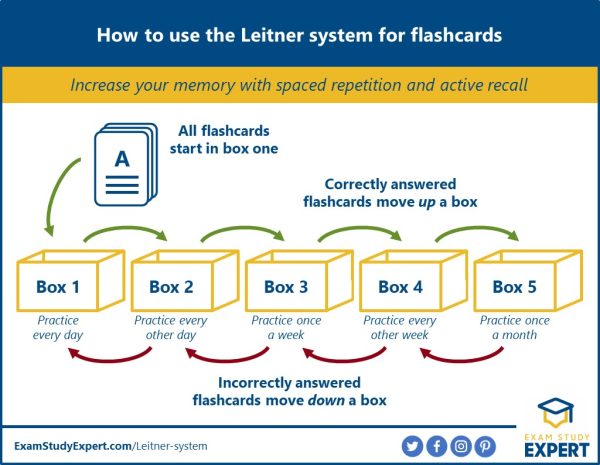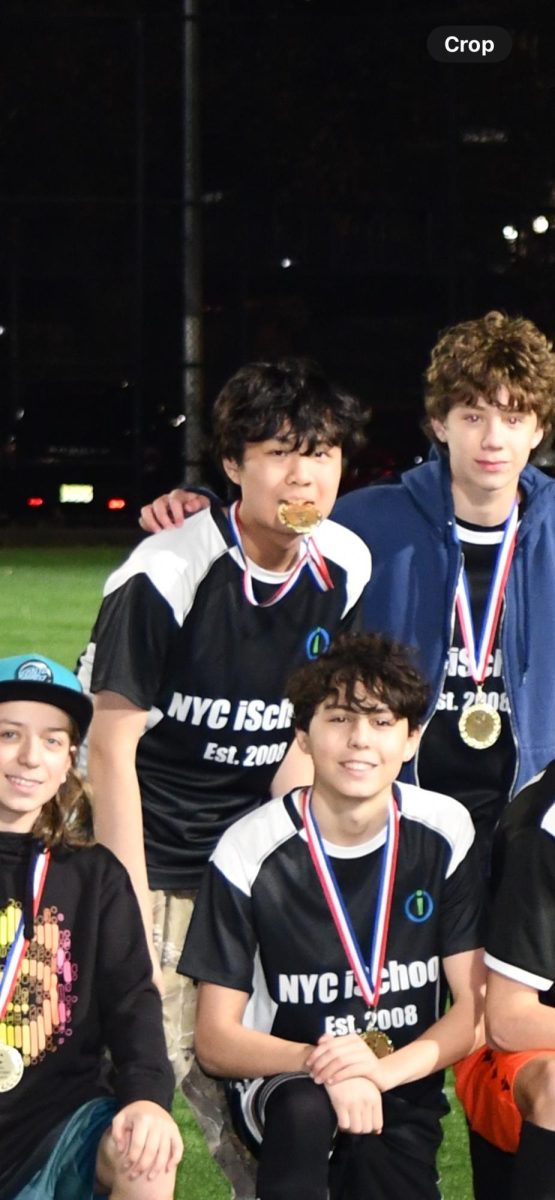Exam day was approaching much sooner than expected. It was a Thursday and the SUNY ESF exam was on Monday morning. I took my best pen and notebook and began to prepare for the second exam of the quarter. I was nervous about this particular exam since the previous one did not go so well. However, I decided to prepare several days in advance with a fixed study method and became more determined than ever before to receive a perfect score. I would rewrite the class’ Google slides in my notebook, take practice tests and explore numerous outside sources to retain more information.
You may be wondering: were these study habits enough to achieve a perfect score? In short, the answer is no. In fact, I got a worse grade than my first exam. Some might say that instead of eating that exam, the exam ate me. But after consulting with friends and academic counselors, I came to the realization that there was nothing wrong with me, but rather the way I studied.
It is indisputable that many students have felt as if their study efforts have been in vain because they did not achieve the results that we expected. However, in moments like these, we should strive to change our method of approach to achieve different results.
There is importance in cultivating the proper mindset through differing study strategies in order to unlock your full potential.
Study Strategies
- Testing your knowledge before class
A Cornell University study determines that assessing your knowledge before class can help you develop a focus area that you need additional support in. For instance, it is common to overlook the syllabi that our teachers provide us, rendering them useless. But, in actuality, when we pay close attention to the content of the syllabi, we can easily predict potential topics that may become challenging throughout the course.
You can additionally utilize the syllabi to actively engage with the content before the teacher covers it. This will aid in your comprehension of the material since you will have already been familiar with the topics you find most challenging when they are covered in class.
Having some previous knowledge about the course will boost your confidence during class and will ultimately reduce confusion throughout the quarter.
2. Taking Notes
During long and mundane lectures, I used to write down all the information that was on the board thinking that the information would miraculously be engraved into my memory. However, throughout my time in high school, I’ve learned that notes are only crucial for written assignments. Thus, to give more meaning to the notes that you take in class, it’s important to rather simply summarize the content presented and follow by jotting down any lingering questions you may have.
Biomedical engineer Jun Yuh suggests that you can form the content presented in your slides into a “What is…? question.” As some examples, Yuh provides some guiding prompts for you to follow while undergoing a lecture:
- How does this information relate to what we’ve previously learned?
- Can you provide an example that illustrates this concept?
- What are the potential real-world applications?
- Can you explain the steps/process involved in this phenomenon?
- What are the main factors that influence this outcome?
At the end of the day, be concise about your notes and write down anything that stands out to you.
Try implementing organization techniques like the ones suggested from University of North Carolina such as “‘there are four main…’ or ‘to sum up…’ or ‘a major reason why…’” Aim to create notes that allow you to actively engage with the content and make connections throughout the lecture.
3. Reviewing after class
The key to a long-term retention of the content you’ve learned is to engage with it once more after class. According to Education Corner, this ensures that you don’t forget 50% of the lesson in one day; instead, this technique allows you to recall 75% of what you’ve been taught. Therefore it is crucial to review your diligently written notes by continuously revisiting the concepts taught.
We can take this methodology a step further by utilizing the Leitner System; this approach uses spaced repetition to ensure the retention of the material. It is commonly illustrated as the following:

The Leitner system is very flexible to many study needs. While flashcards can be inserted into the boxes, you can also substitute pre-tests, notes or any pertinent information in their place that you deem necessary for long-term retention.
Asif Haque, a current junior at NYC iSchool, expresses that the Leitner system once helped him pass his AP Calculus AB exam. When his test date was five days away, Haque would review the content the first day by quizzing himself; then he’d practice two days from the initial start date. If he got all the questions correct, Asif would then review daily until the night prior to the exam. If he answered the questions incorrectly, he would go back and cover all the topics again.
4. Blurting and Feynman Technique
The Blurting and Feynman methods are two effective processes for recalling essential information before an assessment.
First, the Blurting System requires you to write down everything you know about the given topic in thirty minutes. This process pushes your brain to highlight crucial information that will aid in the exam’s success.
To follow, then utilize the Feynman Technique. The technique is based on Albert Einstein’s belief that if you “can’t explain it simply, you don’t understand it well enough.” Yuh suggests that you can implement this technique by talking to friends, family or even inanimate objects to test your ability to simplify complex topics into easily understandable information.
When the Blurting method and Feynman Technique come together, you will be able to recall the important content necessary for an A+ while developing the ability to even teach the information yourself.
Procrastination
In order to change our approach to studying, we must first understand the main cause of unproductive behavior, identifying the reasons for procrastination.
According to the “Why you procrastinate even when it feels bad” TED-ED, procrastination is defined as the “avoidance of a task we said we would do for no good reason, despite expecting our behavior to bring negative consequences.” Moreover, the reason we procrastinate is that when we have a task to do that will require quite some thinking; we tend to delay the task “in favor of some less stressful task.” However, this can lead to feelings of dread, incompetence and insecurity. Essentially, the more we delay a task, the higher the chance for negative emotions to emerge.
Dr Carol S. Dweck, in her book “Mindset,” states that it is no surprise that individuals who procrastinate frequently express significant anxiety in regards to failure. Tasks can be delayed for a plethora of reasons; the most frequent is the worry that the work we submit may not meet expectations set by both teachers and ourselves. The fear that we will fail at the work we complete can often prevent us from completing tasks. Therefore, the development of a growth mindset is essential to limit the procrastination in our lives.
So here is a tip to deal with procrastination: if you feel that you are avoiding your work and cannot bring yourself to do it, I recommend utilizing the Pomodoro Technique. The technique completes work in twenty-five minute time intervals with five minute breaks in between. Considering its effectiveness, numerous apps have been designed to promote and implement the Pomodoro Technique. Apps including Flora and FocusPomo are renowned for their implementation of this technique.
Mindset
It is imperative that we change the way we think about our abilities when studying. This can be seen when students believe in their capabilities to succeed, putting in effort and developing their skills in academics or recreational activities. Based on CWU a student with a fixed mindset “believes their basic qualities of intelligence or talent are permanent”, which cannot be developed. To grow as learners, it is crucial that we continuously put in this effort.
Specifically at the NYC iSchool, it is common for students to lean towards a fixed mindset due to the nonexistent impact of homework on our overall grades. This suggests that many students don’t struggle with the content outside of school and learn from their mistakes.
Furthermore, iSchoolers need to understand that the most talented people in the world came to be through hard work. The most common example of this is the greatest basketball player of all time, Michael Jordan. After being cut out from the varsity basketball team, he was heartbroken.
However, due to his tremendous power of will and determination, Jordan grew from that bubble of devastation to work on his weaknesses everyday. Eventually, his willingness to work harder than anyone else led to his rocketed success and fame.
Jordan’s favorite Nike advertisement he’s made says: “I’ve missed more than nine thousand shots. I’ve lost almost three hundred games. Twenty-six times, I’ve been trusted to take the game-winning shot, and missed.” This displays that he is not a natural, his success comes from the hard work he has put in. Similar to Jordan, iSchool students ought to cultivate a habit of going above and beyond their in-school efforts. This includes making an effort to comprehend concepts that may not have been clear during class and employing effective study methods to enhance their academic abilities.
In his article “Why I’ll Never Tell My Son He’s Smart,” Salman Khan states that “people with growth mindsets understand that capability and intelligence can be grown through effort, struggle and failure.” Thus, as students, we need to push ourselves to complete work that is challenging to help us grow in any given area of life.
Conclusion
It is important for students to study effectively as passive studying and active studying vary greatly. Dedicating more time to actively engage in class can reduce the number of hours needed to study outside of class. The study methods described can be slowly implemented into your academic routine to ultimately make them habits. To adequately implement these study strategies, it is subsequently necessary to push the way you think about intelligence. This can notably be done by continuously challenging your boundaries over time to enhance your performance.
So I chose to implement all of these techniques for SUNY ESF, too. After realizing my study methods were ineffective, I began taking meaningful notes during class, asking questions, and utilizing the Leitner System to recall facts about extinction and the effects of habitat loss. Following my revised approach to learning and studying, I studied the night before the third SUNY ESF exam with the Blurting Method, and jotting down everything I knew.
The following day, SUNY ESF teacher Mr. Mulroy rewarded me with an A+ reflected on my Jupiter Ed. This was the most thrilling moment in my academic journey as I learned to decode the secret to becoming an academic weapon.













